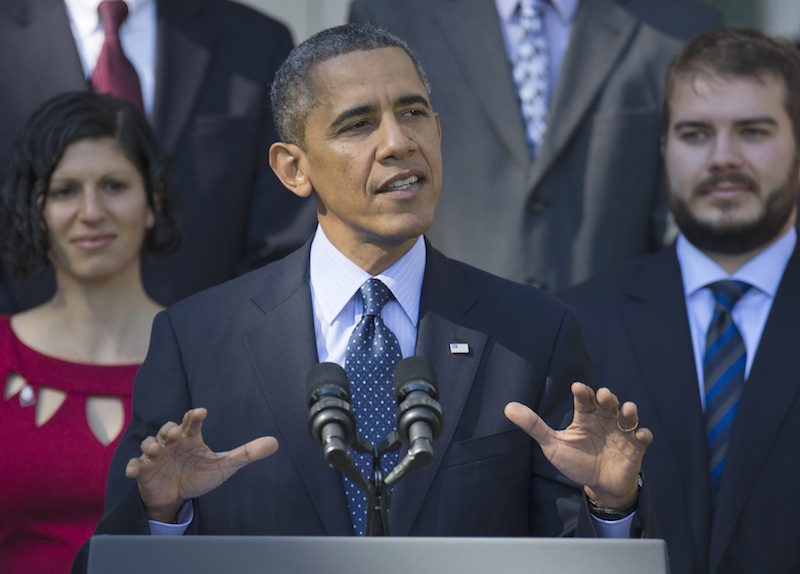President Obama wasn’t entirely right in 2009 when he said that if you like your health care plan, then you can keep it. Some people are going to have their health insurance plans canceled, and it does have something to do with Obamacare.
From a political standpoint, that’s enough to ignite a firestorm. From a policy standpoint, there’s a whole lot more going on here.
What really matters is what happens to the people who are receiving those cancelation letters that congressional Republicans have been parading in front of the cameras?
The bottom line: Almost all of them are going to receive the same or much better coverage, and many of them are going to receive financial help to purchase it.
First, let’s put the issue in perspective. As Jonathan Gruber, the MIT professor who oversaw Massachusetts health reform and is therefore as close as we have to a true veteran of a dramatic insurance overhaul, told the New Yorker, it’s only a small percentage (3 percent, to be precise) of Americans who you can really argue might at least potentially get screwed.
About 80 percent of people, those who receive insurance through their employer or are already enrolled in a government program, won’t experience any change at all, Gruber said. (The Kaiser Family Foundation puts the number at 79 percent).
Another 14 percent are currently uninsured people who will now be able to get covered because of the Affordable Care Act, Gruber said. (Kaiser pegs it at 16 percent uninsured). How many of those actually get covered depends on a few variables — like whether Republicans states come around and expand Medicaid — but that’s the share that stands to gain.
So then you have 6 percent who might receive a cancelation letter (Kaiser says the individual market is 5 percent). Of those, Gruber argued, about half aren’t really going to see a change: They’ll technically enroll in a new plan, but it’ll be very similar to what they already had.
That leaves 3 percent who will have to buy significantly different plans, some of whom might have to pay more for them (at least before the law’s tax credits and other financial assistance kick in).
That also more or less lines up with the figures from the NBC News report that started the firestorm this week, which said that the Obama administration knew that 50 to 75 percent of the 14 million people in the individual market would receive a cancelation notice.
But those numbers require some historical context. According to the federal rule that birthed this controversy, research suggested that 40 to 67 percent of plans purchased on the individual market were in effect for one year or less. That’s a lot of turnover that already existed before the ACA.
Alright, so those 3 percent of people who are going to have to purchase significantly different coverage: What are they going to get?
Nobody’s disputing that they’re going to get better coverage. The reason that plans are being canceled in the first place is that they don’t comply with Obamacare’s requirement that they cover 10 categories of care known as essential health benefits.
The administration released a report in December 2011 that explained how well the individual insurance market covered those essential benefits. It found: 62 percent didn’t cover maternity care; 34 percent didn’t cover substance abuse services, 18 percent didn’t cover mental health services; and 9 percent didn’t cover prescription drugs. There are also no annual caps and no lifetime limits under the ACA, which almost eliminates the risk of going bankrupt because of medical costs in a way that didn’t exist before the law.
That’s why experts have routinely said that you can’t make an “apples-to-apples” comparison between 2013 and 2014 insurance premiums, because the plans being offered now are much more robust.
And speaking of premiums, the numbers suggest that many of these people who might receive a cancelation letter will have access to the substantial financial help that Obamacare offers.
To be clear, nobody has done an analysis yet of what people who have received a cancelation notice are going to pay for coverage under the ACA. There’s just no way to do that. But we can take a pretty educated guess by looking at the breakdown of the health insurance market provided by the Kaiser Family Foundation.
People making less than 400 percent of the federal poverty level qualify for either tax credits or expanded Medicaid (which, to be clear, has to cover the same set of 10 benefits that private plans have to cover). According to Kaiser, about 60 percent people in the individual insurance market (more than 10 million) have an income within that range, which leaves the other 40 percent (about 4.4 million) who don’t and won’t qualify for help.
So mash this all up — it’s an imperfect science — and Gruber’s prediction that about 3 percent of Americans are actually at risk of ‘losing’ under Obamacare holds up pretty well.
“We have to as a society be able to accept that,” he told the New Yorker. “Don’t get me wrong, that’s a shame, but no law in the history of America makes everyone better off.”






